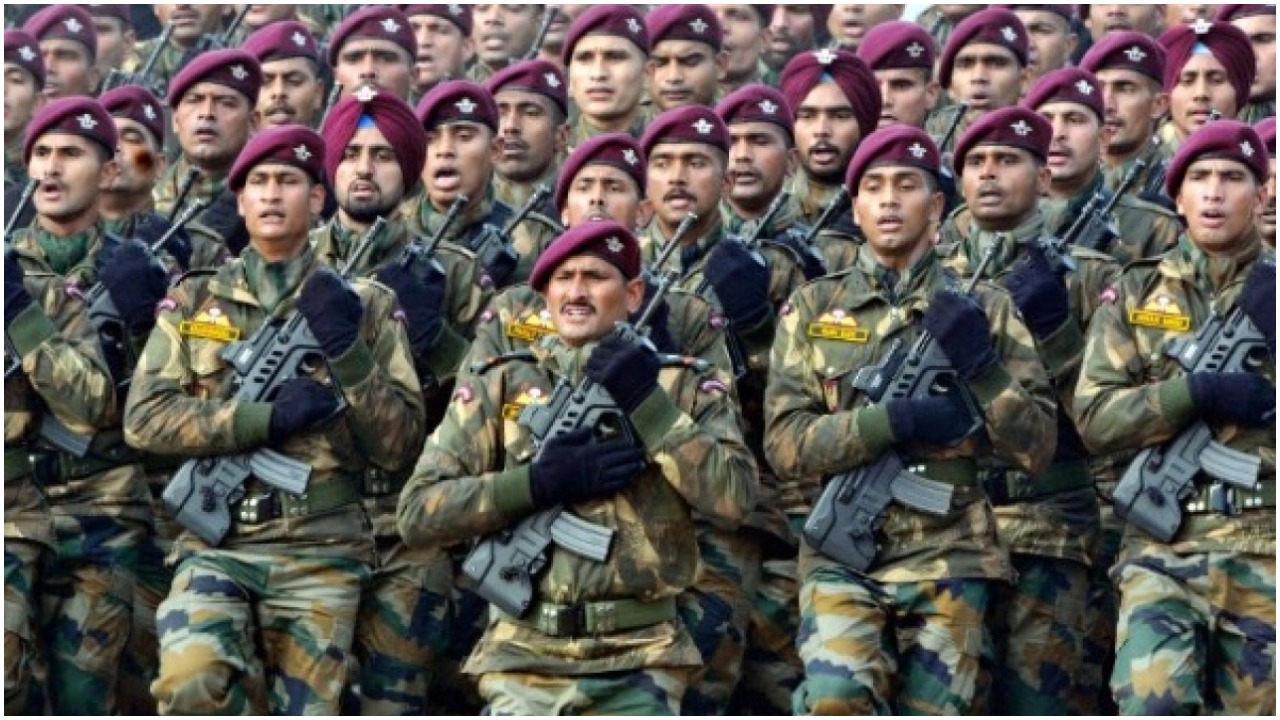A battle cry evokes josh and coordinated enthusiasm among soldiers in operations, exercises, games and other events.
Ayo Gorkhali… That is the blood curdling battle cry a platoon or company of Gorkha soldiers will shout out aloud when they attack the enemy, with their khukris flashing and their weapons blazing.
What is a battle cry? Why do we invoke a religious deity in some of the regiments’ battle cries? I came across a debate on this on social media. I answered some queries, but it evoked several thoughts and I take this opportunity to discuss the issue. I must clarify that the terms battle cry and war cry are used interchangeably in the Army and this article.
Indian Army’s fighting arms regiments are generally based on regions or religions. This system has stood the test of time. In fact, it has added value to the combat effectiveness and cohesion quotient of our Army.
A battle cry evokes josh and coordinated enthusiasm among soldiers in operations, exercises, games and other events. It sets the adrenaline pumping. What could be a better rallying point than a deity in a single-religion regiment? Since the ancient times, armies marched into battlefield only after invoking the blessings of the Almighty, often in elaborate rituals. It was a concept of a just war, of triumph of good over evil.
Some regiments base their war cries on the region from where the bulk of the troops hail from, like the Gorkha’s war cry is “Ayo Gorkhali” or the Madras Regiment’s war cry is “Veer Madrasi, Adi Kollu, Adi Kollu” (Strike and Kill, Strike and Kill). Some war cries have mixed sentiments of region and religion, like the Jat Regiment. Their war cry is “Jāt Balwān Jai Bhagwān”, meaning “The Jat is Powerful, Victory Be to God!”
In mixed regiments, often the battle cry is “Bharat-Mata-ki-Jai.”
The brave Indian soldier asks for so little, and yet is ready to sacrifice his life for the country, anytime and anywhere. It’s a paradox that while there are several pensions and benefits related complaints that the veterans (retired soldiers) have and voice, yet while in service the soldiers have never let that dent their enthusiasm or patriotism or willingness to risk their lives whole-heartedly when required. That is so because of a set of value systems that is cultivated and fostered in the Indian Army soldiers.
Regiments or Corps, even training and other static establishments have a motto that sets the ethos for all soldiers to live up to. The motto of my Jammu and Kashmir Light Infantry (JAKLI) is “Balidanam Veer Lakshnam”, which infuses our soldiers with the ethos that (the willingness to) sacrifice is the sign of the valiant. The Commando Training School boasts of the very apt and awe-inspiring motto “When the going gets tough, the tough get going”. The motto of Corps of Electrical and Mechanical Engineers is “Karm Hi Dharm”. Translated into English the motto is, “Work is Supreme Duty”.
Then there is a credo. A credo sets the value system of a unit or establishment. Just like children are taught to be truthful and honest and God fearing, a credo fosters a value system for soldiers or intended target group. One of the best examples that I can think of is the “Chetwode Credo”. Field Marshal Philip Chetwode, the Commander in Chief of the Indian Army, who was instrumental in the Indianisation of the Indian Army forces and for the setting up of the Indian Military Academy (IMA) gave it the credo reproduced below. It is derived from an address the Field Marshal gave to the Academy in 1932.
“The safety, honour and welfare of your country come first, always and every time. The honour, welfare and comfort of the men you command come next. Your own ease, comfort and safety come last, always and every time.”
As an alumnus, I can say that the Chetwode motto stirs up much passion in all gentleman cadets and all officers of the Indian Army. The motto of IMA, on the other hand is (Veerta aur Vivek), which is very apt and self explanatory. With these values and ethos, no wonder that the Indian Army officers are one of the best leaders whom soldiers love to follow in war and peace.
The infusion of high technology based precision weaponry has enhanced the lethality of future warfare manifold. An army will be competitive only if it has modern state of the art weaponry and latest equipment. It will be successful only when the man behind the machine, the soldiers who operate these weapons and platforms are well trained and steeped in values that give them an edge. These intangibles of credos and motto set the value system and ethos that weigh in heavier than weapons and equipment. Infused by these set of values, the Indian Army soldier willingly faces a plethora of challenges and difficulties, and if the need arises, gives the ultimate sacrifice in the service of the nation.
And let one every Indian adopt this war cry. Bharat Mata ki Jai.
Lt General Satish Dua is a former Corps Commander in Kashmir, who retired as Chief of Integrated Defence Staff. Views expressed are personal.

